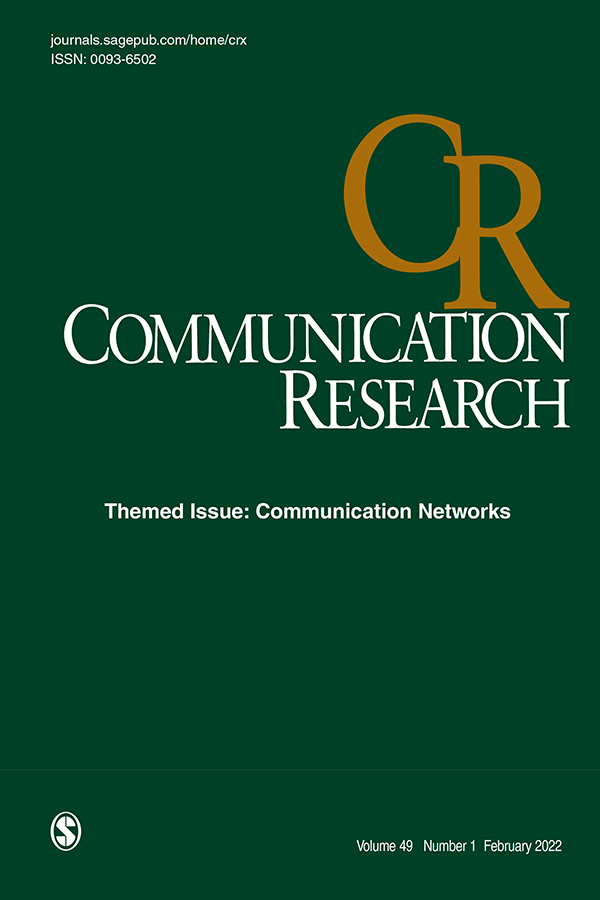Exploring the Relationship Between Exposure to Media Depictions of Undocumented Immigrants, Identity Management, and Undocumented Immigrants’ Family Communication Profiles
IF 3.2
1区 文学
Q1 COMMUNICATION
引用次数: 0
Abstract
Using longitudinal survey data from 366 undocumented college students, a latent profile analysis was conducted to identify groups of students according to their identity management strategies (outlined by social identity theory), as reflected in protection-oriented and strengths-based family communication. The “探讨无证移民的媒体描述、身份管理与无证移民家庭沟通档案之间的关系
利用366名无证大学生的纵向调查数据,进行了潜在特征分析,根据他们的身份管理策略(由社会身份理论概述)来识别学生群体,反映在以保护为导向和以优势为基础的家庭沟通中。“高竞争和创造力”形象经常参与交流,表明社会竞争和创造力。“部分竞争和创造力”通常传达了未记录的相关障碍(反映了社会竞争),同时在一定程度上也分享了对未来的乐观情绪(表明了社会创造力)。“有限的竞争、流动性和创造力”导致所有战略的沟通水平都很低。随着时间的推移,人们的健康和幸福感基本稳定;然而,“高度竞争和创造力”的形象报告了更多的焦虑和胃痛,以及最强烈的无证身份。最后,接触媒体对无证移民的描述与“高竞争和创造力”的形象有关,而不是“有限竞争,流动性,创造力”的形象。
本文章由计算机程序翻译,如有差异,请以英文原文为准。
求助全文
约1分钟内获得全文
求助全文
来源期刊

Communication Research
COMMUNICATION-
CiteScore
17.10
自引率
0.00%
发文量
20
期刊介绍:
Empirical research in communication began in the 20th century, and there are more researchers pursuing answers to communication questions today than at any other time. The editorial goal of Communication Research is to offer a special opportunity for reflection and change in the new millennium. To qualify for publication, research should, first, be explicitly tied to some form of communication; second, be theoretically driven with results that inform theory; third, use the most rigorous empirical methods; and fourth, be directly linked to the most important problems and issues facing humankind. Critieria do not privilege any particular context; indeed, we believe that the key problems facing humankind occur in close relationships, groups, organiations, and cultures.
 求助内容:
求助内容: 应助结果提醒方式:
应助结果提醒方式:


